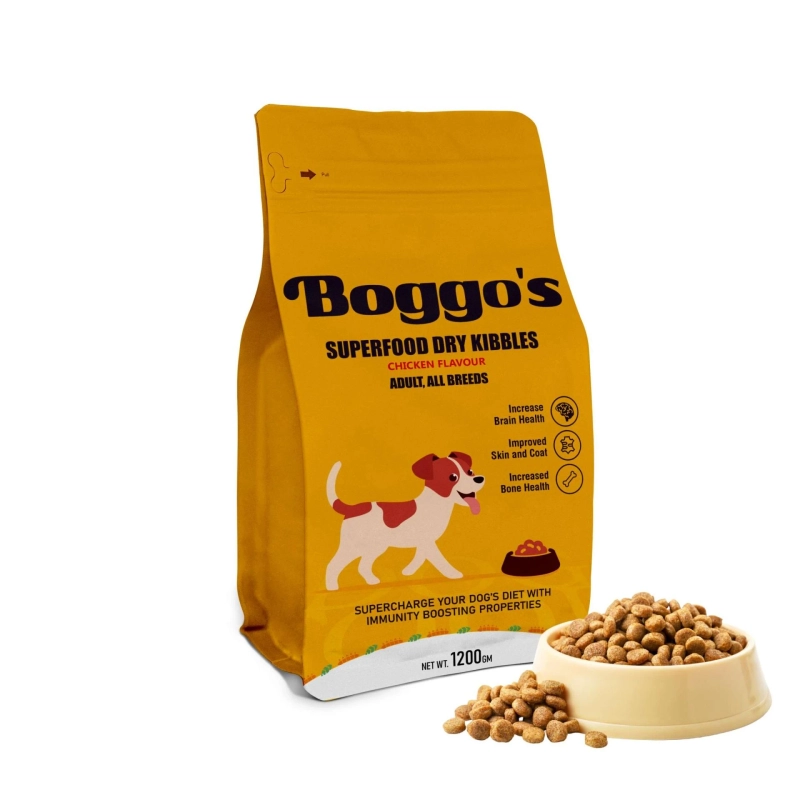Dog owners are now presented with many options, including grain-free, raw, and traditional dog food. Navigating these trends requires understanding their merits, potential drawbacks, and how they align with the specific needs of individual dogs.
Grain-Free Dog Food: A Trend On The Rise
In recent years, the popularity of grain-free dog food has soared, driven by the perception that it aligns with a more natural canine diet. This trend is rooted in the belief that ancestral dogs primarily consumed a diet devoid of grains before the advent of commercial pet food.
Grain-free dog food typically substitutes traditional grains like wheat, corn, or soy with alternative carbohydrate sources such as sweet potatoes, peas, or lentils.
It\'s essential for pet owners to approach the grain-free trend with caution. Recent studies have raised concerns about a potential link between grain-free diets and the development of dilated cardiomyopathy (DCM) in dogs, a serious heart condition.
While the exact connection is still under investigation, consulting with a veterinarian before transitioning to a grain-free diet is crucial.
Raw Dog Food: Embracing Canine Ancestry
The raw dog food movement takes inspiration from the diet of wild canines, emphasizing uncooked meat, bones, and organs. Advocates argue that a raw diet is more in tune with the natural evolutionary history of dogs, providing essential nutrients and enzymes that may be destroyed during the cooking process.
Raw diets often contain meat, bones, organ meats, fruits, and vegetables. Some pet owners choose to prepare raw meals at home, while others opt for commercially available raw dog food products.
Proponents of raw feeding claim benefits such as improved coat health, dental hygiene, and increased energy levels. However, the raw diet trend is not without controversy. Critics express concerns about the risk of bacterial contamination in raw meat, potential nutrient imbalances, and the challenge of ensuring a complete and balanced diet.
Additionally, feeding a raw diet requires meticulous attention to hygiene, and the potential transmission of pathogens like Salmonella or E. coli poses a risk to both the dog and its human caregivers. If considering a raw diet, consulting with a veterinarian is essential to address these concerns and meet the dog\'s nutritional needs.
Traditional Dog Food: The Tried And True
Amidst the rise of alternative trends, traditional dog food, typically in the form of kibble, remains a steadfast and reliable option for many pet owners. Commercially prepared traditional dog food undergoes extensive quality control measures, ensuring that it meets specific nutritional standards for dogs of all life stages.
Traditional dog food formulations are often based on a combination of proteins, carbohydrates, fats, vitamins, and minerals, providing a complete and balanced diet.
One of the primary advantages of traditional dog food is its convenience. Kibble is easy to store, has a longer shelf life, and doesn\'t require the same level of handling precautions as raw food.
Navigating Trends: Making Informed Choices For Your Dog
Several factors should be considered when deciding on the best diet for your dog. These include the dog\'s age, size, health condition, activity level, and any specific dietary sensitivities. Here are some guidelines to help pet owners navigate through the grain-free, raw, or traditional dog food options:
- Consider Your Dog\'s Health Status:
- Dogs with specific conditions may benefit from certain types of diets. For example, dogs with allergies or sensitivities may find relief with grain-free options, while those with compromised immune systems may be better suited to traditionally formulated diets.
- Evaluate Practicality And Lifestyle:
- Consider your own lifestyle and the practicality of implementing a specific diet. Raw diets, for instance, require careful handling and preparation, which may not be feasible for all pet owners.
- Monitor For Changes:
- Regardless of the chosen diet, closely monitor your dog\'s health and well-being. Changes in coat condition, energy levels, and digestive health can provide valuable insights into the suitability of the chosen diet.
- Stay Informed On Industry Developments:
- Stay abreast of industry developments, especially concerning trends like grain-free diets. Ongoing research may provide new insights to influence your decision-making regarding your dog\'s diet.
Final Thoughts
Grain-free, raw, and traditional dog food each has its merits and considerations, and there is no one-size-fits-all solution. By staying informed, consulting with a veterinarian, and regularly assessing your dog\'s well-being, you can navigate the diverse landscape of dog food trends and make choices that contribute to your dog\'s overall health and happiness.



